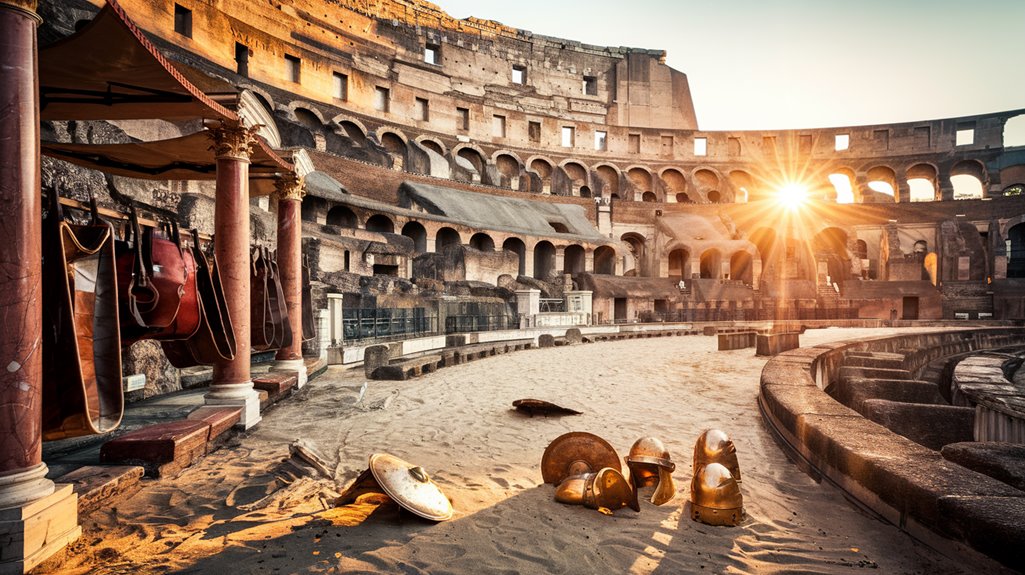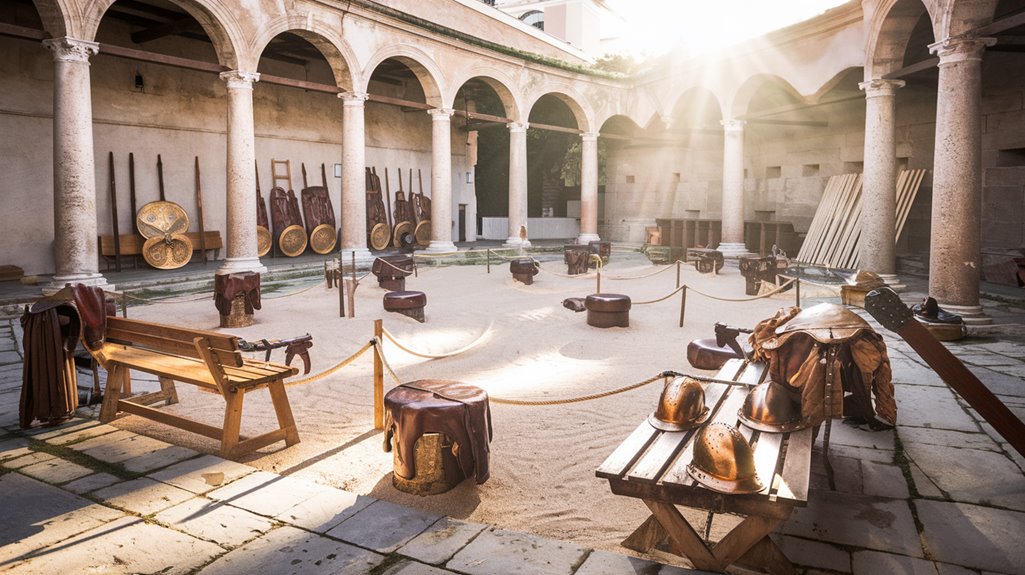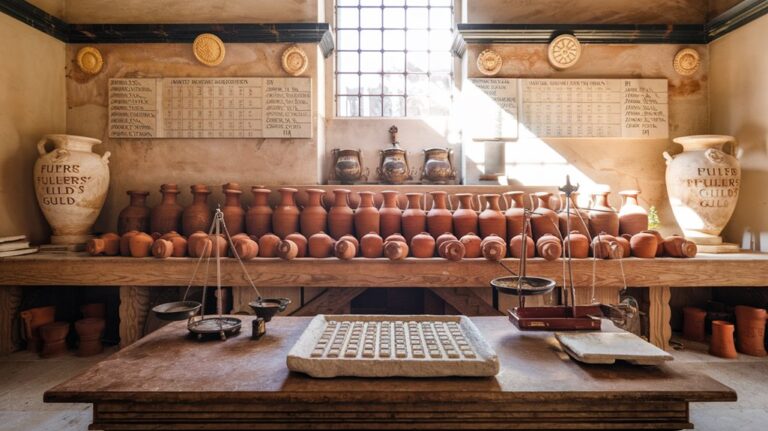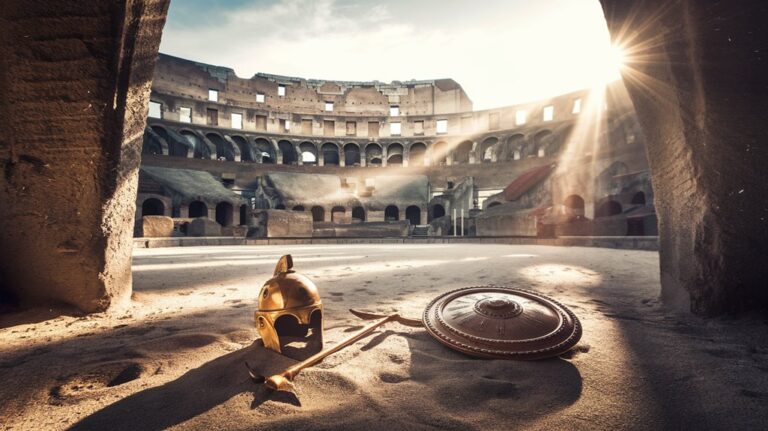Gladiators: The Celebrities of Ancient Rome
You might not know that Rome's most famous gladiator, Flamma, turned down his freedom four times to continue fighting in the arena. As a Syrian slave who became a legendary fighter, he won 21 matches, drew 9 times, and lost just 4 bouts in his career. His story represents the complex world of ancient Rome's celebrity fighters, where glory, wealth, and social status created an intricate dance between slavery and stardom. Let's explore how these warriors became the superstars of their time.
From Religious Rites to Public Entertainment
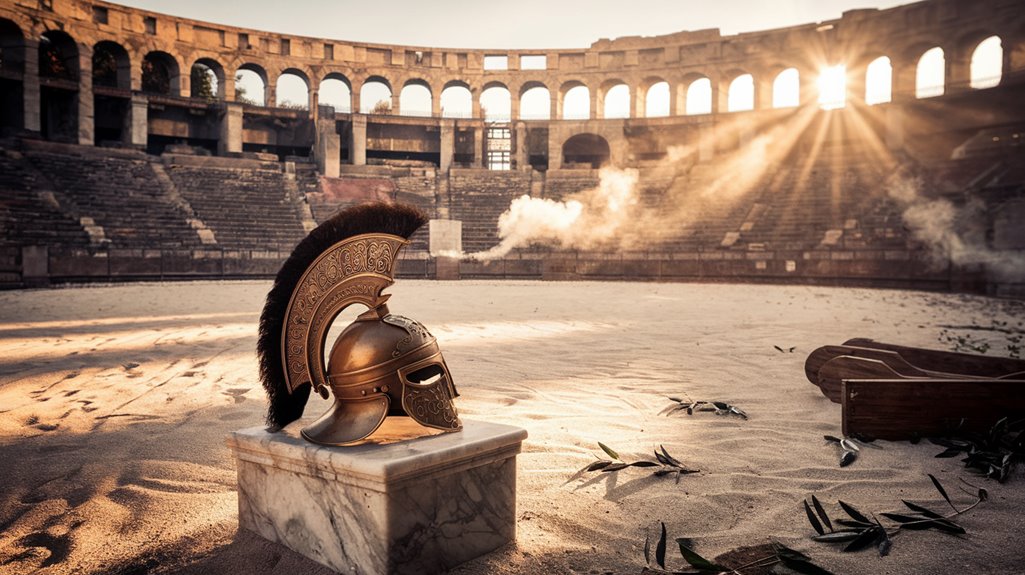
While many associate gladiatorial combat with pure entertainment, these spectacular events actually began as solemn religious ceremonies in ancient Rome. The first recorded games took place in 264 BC at the Forum Boarium, where their ritual significance centered on honoring the dead and appeasing ancestral spirits through what was known as munera.
You'll find that the social dynamics of these events evolved dramatically over time. As wealthy families discovered the political advantages of hosting games, they began staging increasingly elaborate spectacles. Many of these fighters became celebrated public figures, drawing massive crowds to the arenas. Art throughout Rome depicted these warriors in tomb paintings, showing their cultural importance even before formal Roman adoption.
When Augustus came to power, he formalized the games as both a civic and religious duty, leading to state sponsorship. What started as private funeral rites transformed into grand public entertainment, becoming deeply integrated into Roman festivals like Saturnalia and Quinquatria.
The Evolution of Gladiator Types and Combat Styles
The gladiatorial games' transformation from religious ceremonies to mass entertainment brought with it an extraordinary diversification of fighter types and combat styles.
You'd find gladiator weaponry ranging from the retiarius's trident and net to the murmillo's gladius and shield, each requiring unique combat formations and techniques. The murmillo gladiators were known for their distinctive arm protection and commonly faced off against hoplomachus fighters.
The most popular matchups pitted contrasting styles against each other, creating dramatic spectacles that'd keep you on the edge of your seat. For example, the highly experienced rudiarii, who had earned their freedom but chose to continue fighting, were especially favored by audiences for their skilled performances.
Here's what made these battles so engaging:
- Speed vs. Power: Light fighters like retiarii against heavily armored secutores
- Range vs. Close Combat: Sagittarii archers versus traditional sword fighters
- Native Fighting Styles: Gauls and Thraeces bringing their cultural combat techniques
- Specialized Equipment: Essedarii with their chariots and laquearii with their lassos
Life Inside the Gladiator Schools
Inside ancient Rome's gladiator schools, three key elements shaped daily life: rigorous training, strict discipline, and structured hierarchy. You'd find gladiators mastering their craft under experienced doctores, progressing from wooden swords to specialized combat styles in well-equipped training facilities.
Living conditions weren't as harsh as you might expect. The schools provided proper nutrition, regular medical care, and access to both hot and cold baths. Their specialized diet consisted of barley and beans, ensuring they maintained the strength needed for combat. They were also given wood ash mixtures to strengthen their bones.
You'd be assigned to barracks within compounds like the famous Ludus Magnus, where you'd form strong bonds with fellow gladiators despite your competitive profession.
While you'd face social stigma outside the school, inside you'd belong to a structured community with clear ranks from novicius to veteranus. You'd even join collegia to guarantee proper burial and family compensation if you fell in combat.
Fame, Fortune, and Following in Ancient Rome
Despite their low social status, successful gladiators could achieve remarkable levels of fame and fortune in ancient Rome. Both slaves and free men were bound by oath to endure harsh discipline from their masters.
You'd find their faces adorning products through early forms of celebrity endorsements, while wealthy patrons competed for gladiator sponsorships. Even emperors like Commodus stepped into the arena to boost their popularity, showing how gladiatorial combat captivated Roman society. Most gladiators received intense combat training at specialized schools called ludi to prepare for their careers.
If you were a successful gladiator, you could expect:
- Substantial financial rewards through prizes and special appearance fees
- A devoted following of fans who'd celebrate your victories
- Opportunities to earn up to 100,000 sesterces for high-profile matches
- The ability to join professional associations that protected your interests
These benefits made the dangerous profession appealing enough that even free men voluntarily entered the arena, seeking glory despite the social stigma.
The Spectacle of Life and Death in the Arena
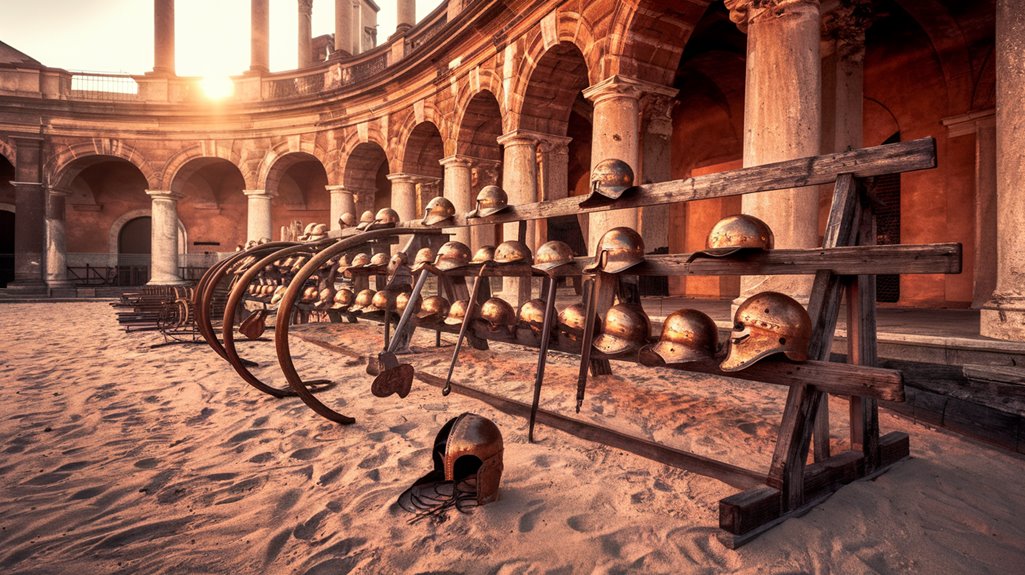
Beyond the fame and fortune, a gladiator's life centered on the arena's raw spectacle of survival.
You'd witness a grand procession led by the emperor himself, accompanied by stirring music that set the stage for the day's bloodshed.
The spectacle violence unfolded in a carefully orchestrated sequence: morning hunts, midday executions, and the main event – afternoon gladiatorial combats.
Many spectators entered through the eighty numbered arches to find their designated seating areas before the games began.
Audience involvement reached its peak during one-on-one battles, where skilled warriors with different fighting styles faced off under a referee's watchful eye.
Slaves and prisoners made up the majority of these fighters, though some free men voluntarily joined their ranks.
When defeat came, you'd see the fallen gladiator kneel and grasp his opponent's leg before the final strike.
Even death was theatrical, with attendants dressed as mythological figures confirming each kill, ensuring the crowd got the dramatic conclusion they craved.

